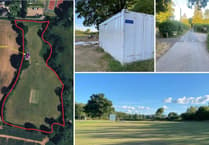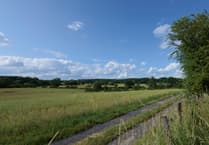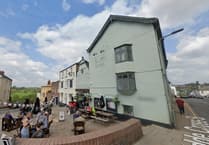A bid for new homes on a dilapidated sports pavilion and former football pitch in the Wye Valley AONB has been thrown out on appeal.
The planning inspector ruled that new housing on land bordering Howle Hill Nursery would “significantly harm the character and rural setting of the site and surrounding area and fail to conserve or enhance the natural beauty of the AONB”.
The neighbouring nursery was itself the site of a recent planning battle, with Hampton Court gold medal-winning gardener Peter Dowle last year winning an appeal for eight ‘contemporary’ homes with ‘polytunnel-style’ roofs.
Tara Barnett of Ross-on-Wye applied for ‘permission in principle’ for up to two homes on the pavilion site, once used by Howle Hill FC.
But Herefordshire Council turned down the scheme last year, saying it amounted to unauthorised countryside development and could harm the landscape and scenic beauty of the AONB.
Virginia Morgan of the Wye Valley Society also told planners the grassland site was at the top of the village with “no services of any sort”, “poor views” and no mains drainage.
“It lies outside the built-up area of Howle Hill… (and) within the Wye Valley AONB and is thus protected,” she said, while the society “strongly disagreed” with claims that it was part of the existing settlement and a brownfield site.
Walford Parish Council also objected, pointing out that the planning statement wrongly said the site was in the ‘Cotswold AONB’, while development on the pastureland would have a ‘significantly adverse’ effect on the landscape.
The appeal to the planning inspector claimed the land was “well related to the main built-up area of Howle Hill and the homes it would provide would help address the un-met housing need”.
It also said the case was supported by the successful nursery appeal and the granting of another neighbouring planning application for four homes, and claimed it was “sustainable development”.
The appeal also claimed that the council had “incorrectly assessed that the site is greenfield, undeveloped land, whilst the appeal proposals would actually provide the opportunity to remediate a previously developed site in poor visual appearance”.
But planning inspector Helen Davies disagreed, saying the “modest predominantly wooden” derelict pavilion in the corner took up a small part of the site, and did not amount to development of the field.
Building homes on it would “disrupt the existing field pattern”, and “significantly reduce the rural qualities of the area”, she ruled.




